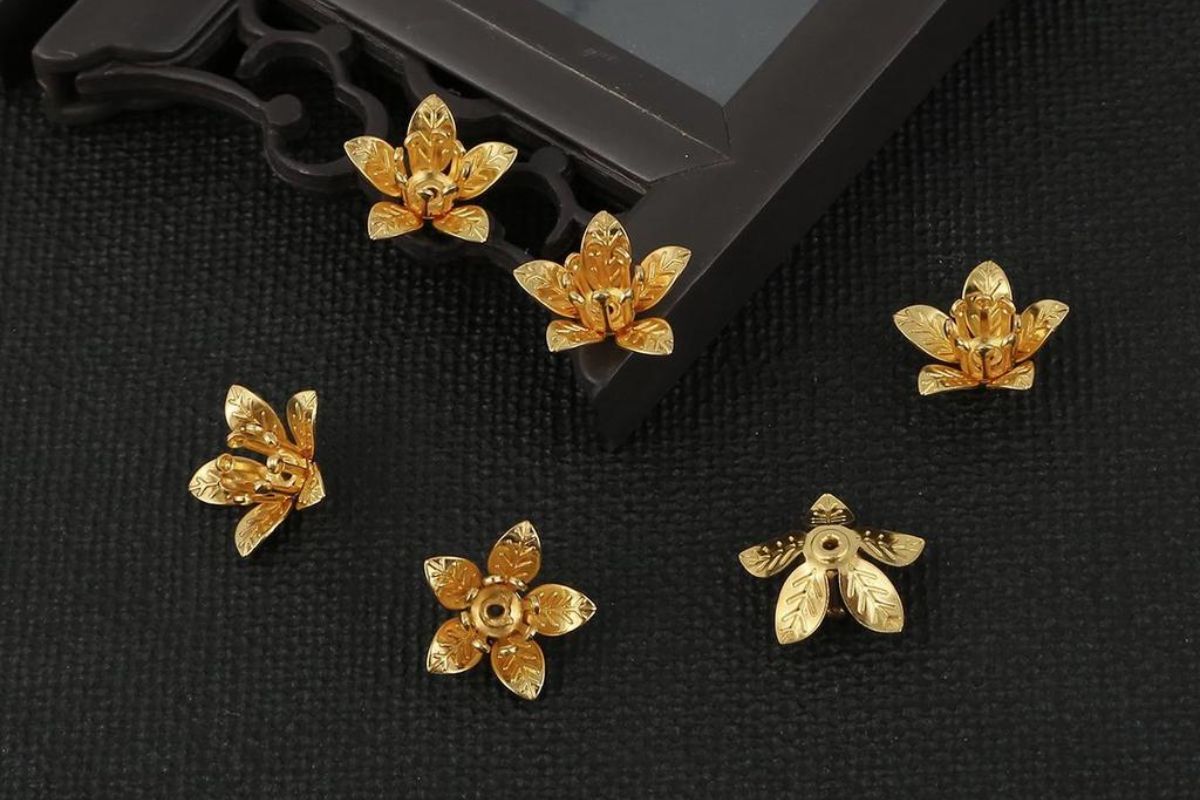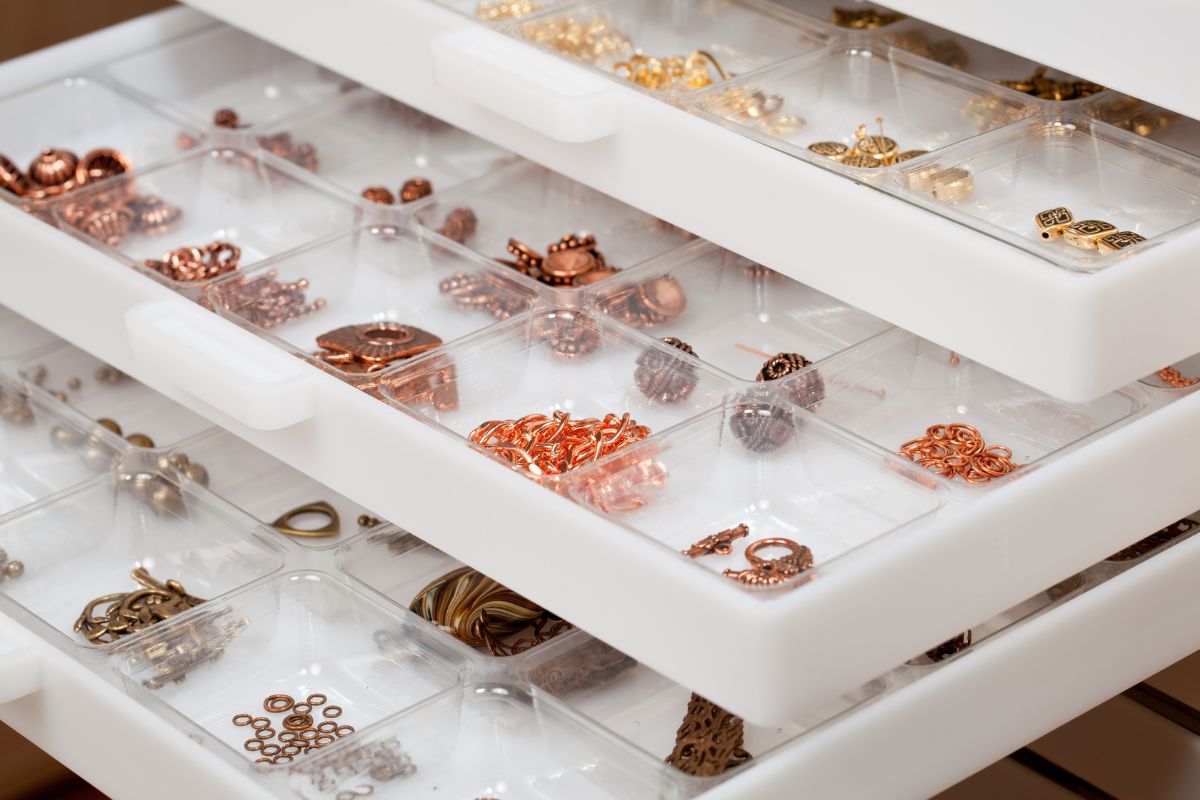Welcome to the fascinating world of jewelry findings, where understanding the terminology can be the key to unlocking endless creative possibilities. If you’ve ever felt a bit overwhelmed by the jargon of clasps, connectors, and decorative elements, fear not! In this comprehensive glossary, we’re going to break down the language of jewelry findings, empowering you to navigate the intricate world of jewelry making with confidence and ease.
Table of Contents
Common Terms in Jewelry Findings
Let’s start with the basics – clasps. First up, the Lobster Clasp – a popular choice known for its secure closure resembling a lobster’s claw. Then, there’s the timeless Toggle Clasp, offering a stylish and user-friendly alternative. And who could forget the classic Spring Ring Clasp – a small, circular closure with a spring mechanism. These are popular jewellery findings for making bracelets. Knowing these common clasps will be the foundation of your jewelry-making vocabulary.

Moving on to connectors, we have the essential Jump Ring, a versatile loop that connects jewelry components. Don’t confuse it with the Split Ring, which is a sturdier, double-coiled alternative. Finally, we have the Connector Link, a vital element for joining different parts of your jewelry seamlessly. These connectors are the unsung heroes, ensuring your pieces are not just beautiful but also structurally sound.
When it comes to fasteners, the Magnetic Clasp adds a touch of modernity, providing a hassle-free and secure closure. For a more intricate touch, there’s the Box Clasp, often adorned with decorative elements. And if you’re aiming for simplicity and reliability, the Slide Lock Clasp is a minimalist’s dream. Understanding these fasteners will give you the flexibility to choose the perfect closure for your designs.
Decorative Elements
Now, let’s dive into the world of decorative elements. Dangle Charms add movement and personality to your creations, hanging freely from your jewelry. If you’re looking to slide charms effortlessly, try Slider Charms for a dynamic effect. For a burst of color and enamel artistry, Enamel Charms bring a playful touch to your pieces. These decorative elements are the secret sauce for infusing character into your designs.
Moving on to pendants, the Bail is a small but crucial finding that connects your pendant to the chain. Consider the Enhancer Bail for added flair – it not only secures the pendant but also becomes a design element. And if you’re looking for a versatile way to link multiple pendants, the Pendant Connector is your go-to. Mastering these terms opens up a world of possibilities for showcasing your favorite charms and pendants.
Now, let’s talk about Head Pins and Eye Pins. The Head Pin is your anchor, securing beads in place. On the other hand, the Eye Pin is perfect for creating links and loops in your jewelry. And if you’re feeling fancy, the Fancy Head Pin adds a decorative touch to your beadwork. These small findings play a big role in bringing your bead designs to life.
Spacer Beads and End Caps
Spacer beads are the unsung heroes of jewelry design. Seed Beads are tiny beads that add delicate detail and texture to your creations. The Rondelle Bead is a disc-shaped spacer that provides a touch of elegance. And for a beachy, boho vibe, consider using Heishi Beads, flat and disk-shaped beads with a natural, earthy appeal. Understanding spacer beads lets you add dimension and style to your designs effortlessly.

Now, let’s talk about end caps – the finishers that bring your designs together. Cord Ends neatly cap the ends of cords or strings, providing a polished look. For a more decorative touch, consider the Ribbon Clamp, especially if you’re working with ribbon or fabric. And if leather is your material of choice, the Leather End Cap is the perfect way to secure and embellish the ends of your leather cords.
Choosing the Right Finding for Your Design
Now that we’ve covered an array of jewelry findings, the question becomes: How do you choose the right finding for your design? Consider the style and function you’re aiming for. Are you creating a delicate necklace that requires an inconspicuous clasp, or do you want to make a bold statement with a decorative box clasp? Think about the overall aesthetic you’re going for, and let that guide your choice of findings. The key is to strike a balance between functionality and style to ensure your jewelry not only looks great but also feels comfortable and secure.
Silver-Plated vs Sterling Silver Jewelry Findings
One big decision you have to make when it comes to jewelry findings is what material you’ll choose. In particular, if you like the appearance of silver, you’ll need to select silver-plated or Sterling silver jewelry findings. While they can look similar, there are some key differences you must be aware of. Let’s take a look at what you need to know so that you can choose the best jewelry findings for your designs.
Silver-Plated
Often, people get confused about what silver-plated jewelry findings are. Well, know that this is an item that’s made from a metal and it’s coated with silver. In particular, this can be copper, nickel or brass. Through an electroplating process, a layer of silver is applied, creating the appearance you interpret as silver.
So, why would you choose silver-plated jewelry findings? Companies find it cheaper to buy, and this keeps their expenses down. This can be highly beneficial if you’re creating designs on a budget. It keeps item prices down for customers too. Plus, the base metal can be very strong.
But, the big thing you have to realize about silver-plated jewelry findings is that they’re not designed for long-term durability. Typically, the silver will wear off over time. They can also tarnish faster than other materials.
Sterling Silver
You’ll find that sterling silver jewelry findings are more expensive to purchase. But, there’s a host of benefits that come with this type of investment. For example, Sterling silver is known for being durable and less likely to tarnish. This isn’t to say that it can’t, but it happens a lot slower than silver-plated jewelry findings.
Therefore, if you’re able to make the investment, you’ll find that Sterling silver jewelry findings offer better longevity. They can also make your designs more valuable, which allows you to offer them at a higher price.
Conclusion
In conclusion, decoding the terminology of jewelry findings opens up a world of creative possibilities. From the classic elegance of a lobster clasp to the contemporary charm of a slider charm, each term adds a layer of understanding to your jewelry-making journey. Armed with this glossary, you’re equipped to explore, experiment, and express your unique style in every piece you create.
















